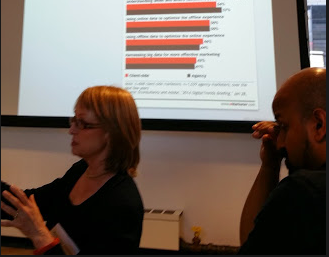Is a media startup a good investment?

By Dennis Clemente
Media startups — a good investment or not? It really depends on who you’re talking to. This was the topic at the TiE meetup last June 24 on Park Avenue South.
If you’re pitching to a VC, convincing them to invest in your media startup is not easy. That’s what Rafat Ali, founder and CEO of Skift, the leading global travel intelligence publication, will tell you.
If we’re talking numbers, it’s a lucrative industry, because digital ad spending has reached $51 billion. That’s the number Adrienne Skinner of e-marketer showed us.
So if VCs are out of the question, you’ll need to raise funds in your immediate vicinity: family and friends and after that, angel investors, even accelerators or incubators. You could also bootstrap it yourself, hope to raise traction and once you accomplish that, try with a VC again. It can happen.
BuzzFeed and Vice have raised $330 million deals. More recently, Upworthy got $7 million in funding. They’re exceptions, Ali will tell you. Having been a longtime journalist, his insights have always been spot-on.
“The growth curve of media is not as high,” he said, pointing to how media requires brand-building efforts in some of his previous interviews.
Media as an asset class is not a focus for venture capitalists. “Venture capital is geared toward giant opportunities,” he added.
It doesn’t mean that media is not a good investment, of course. Some venture capitalists just have different priorities and others like Lerer Ventures, is perfectly fine as an investor of BuzzFeed.
Travel turned out to be a lucrative choice for Ali, a tech journalist before he ventured into his first startup, PaidContent in 2002, which he sold to The Guardian in 2008.
“Travel is the largest B-to-C e-commerce category at $145 billion (US digital travel sales) and $416 billion (worldwide),” said Skinner of e-marketer, the authority on digital marketing, internet market research, statistics, and objective analysis.
Two inflection points that media can look into are mobile ad spending and digital ad spending. In 2016, ad spending is estimated to increase by 83 percent, overtaking the desktop, which shrunk 2.4 percent in 2014. In 2018, digital ad spending will overtake TV
Mobile’s share of the pie is only doing one thing: Getting bigger at 613 percent. That’s growth in daily time spent with mobile from 2010 to 2014.
Still, digital pubs and ad agencies should take into account that that ad spending is also highly concentrated among a handful of companies. Google, Facebook, Microsoft Yahoo, AOL, IAC, Amazon, Twitter and Linkedin share 66 percent of it, which has reduced traditional ad agencies’ share of the pie.
Social accounts for more than 13 percent of digital ad spending. It’s at $7 billion to $51 billion for digital ad spending. Ali cautions people looking into social opportunities. “Social is really easy to get into, but like badminton, hard to master,” Ali said.
Beyond the number-crunching, Skinner said every marketer needs to know 3 fundamental things: 1) How consumer spend money; 2) how consumers spend time and 3) and how best to reach consumers
For the latter, Ali stressed email newsletters more than once. “It’s the no. 1 source for us for getting users.”
The meetup was hosted by “TiE Bootstrap,” a focused series of panel discussions and workshops for entrepreneurs considering a new venture or in the growth stage.